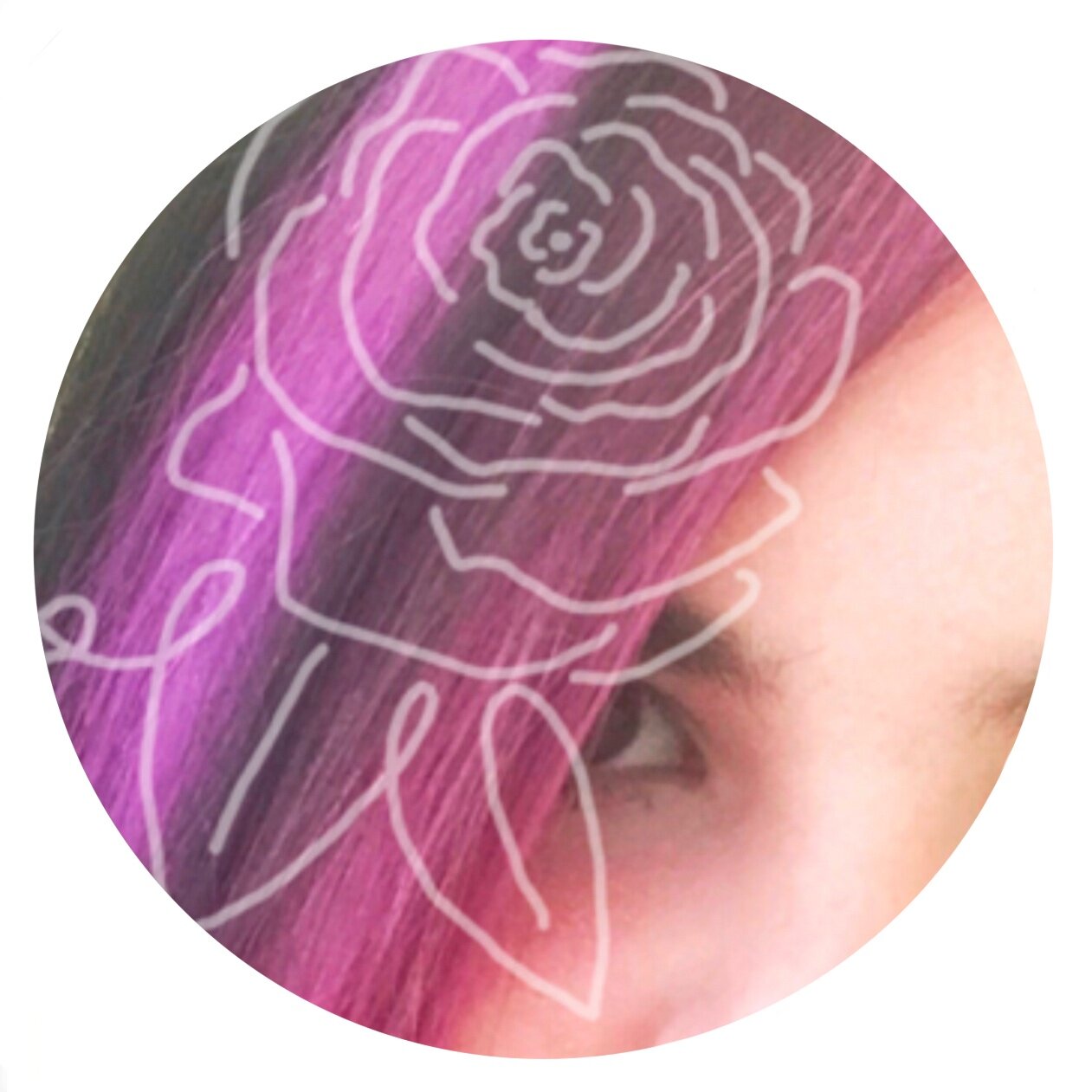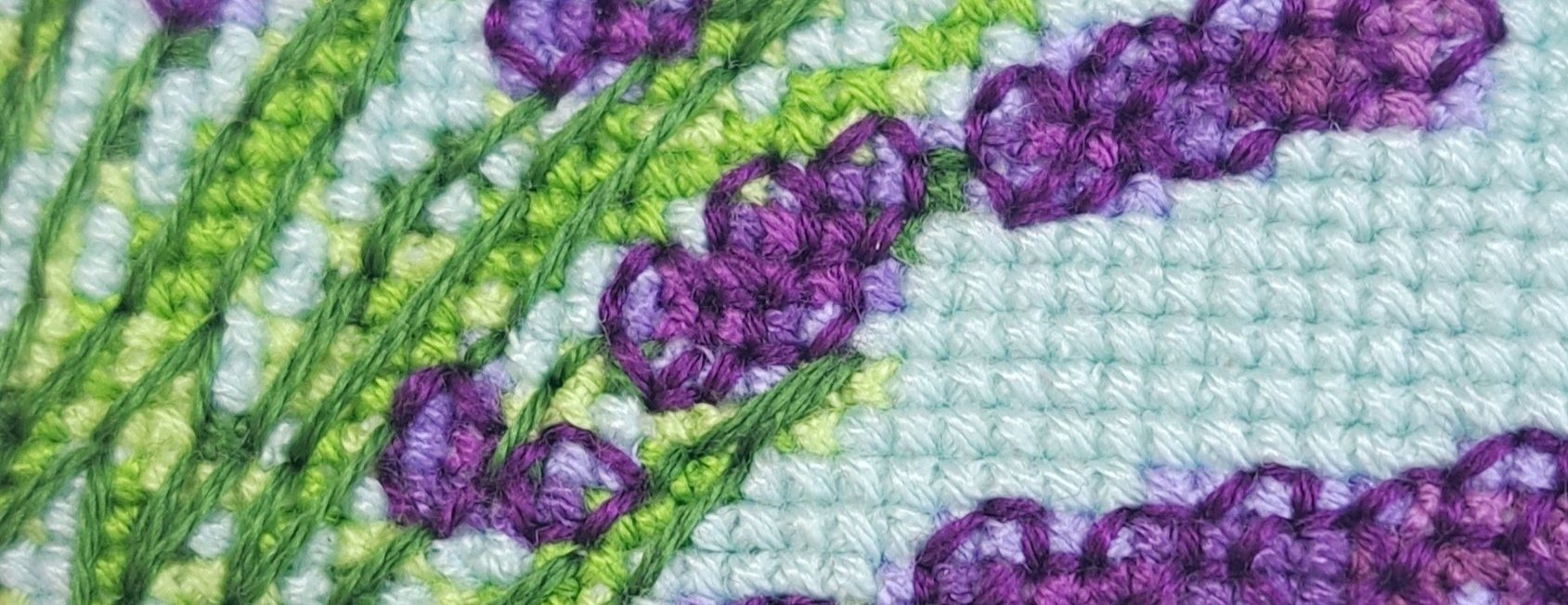Embroidery Advice I Wish I’d Known Sooner
Whenever you’re starting a new hobby, it can be hard to know where to look for all those helpful little tips and tricks that just make it… click!
Recently I asked the Purple Rose Stitchers (that’s all of you lovely people!):
What embroidery advice do you wish you’d known sooner?
There were some fantastic responses, and so many tips I wouldn’t have thought of! I’m going to share all those wonderful responses with you and expand on them to give you that stitching wisdom you might not know
Thimbles are amazing and save your fingers
This one is a little bit down to preference I think. personally I’ve never got on with thimbles as I like to be able to feel the fabric and threads as I’m working and I find thimbles lessen my dexterity.
That being said though, one of my fingers in particular is getting quite sore recently, so maybe I need to give them another go! If you have a good thimble brand to recommend, pop it in the comments
how to start off and finish threads
This is a question I get asked all the time and for good reason! It’s the first step in any project and we all need to know how to get started
There are lots of ways to start your threads. The video below will take you though 5 ways to start threads, my personal go to is the Quilter’s Knot
Finishing threads is even easier (especially if you’re lazy like me!). The last method shown in the video below works for both starting and finishing threads, simply pass the thread under a few existing stitches at the back of your work a couple of times.
Or there’s the way I like to finish my threads… just, leave them! this method only works if your last stitch was small and can hold its own tension, but I like to just snip the thread short at the back of my work, grab the next one and keep going
If you’ve watched enough of my videos, or instagram stories you’ve probably seen just how messy the back of my work can be and that’s ok! Embroidery for me is done for the joy of creating, not the technical prowess, no ones going to see the back so don’t worry about it, just have fun
best fabric to use for embroidery
Another great point, fabric is so important to your stitching experience! The wrong fabric can not only make the process unenjoyable but can also affect the look of the finished design
Fabrics for Embroidery and Thread Painting:
Fabric without stretch. If a fabric stretches as you place it in your embroidery hoop then once removed it will spring back to shape and your stitching may end up looking bunched and puckered. Try and find a fabric without stretch in any direction and if working on clothes that stretch (such as jumpers or t-shirts) use a stabiliser behind your work to keep things steady
Cotton blends. I use a cotton canvas for most of my embroidery. Its lightly textured which I love! Plus its not stretchy at all and thick enough that when I embroider I can’t see the stitches on the back of my work through the fabric.
Kona Cotton makes some lovely coloured fabrics that are also great for embroidery. If working with Kona I like to double up my layer of fabric to give a bit more stability to my stitching, especially when thread painting. That’s just my preference though, as I tend to pull my stitches quite tight and having sturdier fabric helps prevent them for puckering the fabric
Fabrics for Blackwork and Cross Stitch:
Blackwork Embroidery and Cross Stitch are both counted forms of embroidery. This means that the design is worked from a grid and counted on to a fabric that has a even grid of holes to work on.
It comes in different count sizes, the count is the number of holes per inch fabric. The higher the fabric count is, the smaller your design will end up
For example, a design that is 100 by 100 stitches on 14 count fabric will end up being just over 7 inches when finished. To work this out you divide the stitch count (100) by the count of the fabric (14) which in this case gives you 7.14. If you were to stitch the same design on 20 count fabric it would end up being just 5 inches when complete. (100/20=5)
You should choose the count of your fabric carefully so that your design ends up true to size. To low a count and you may need to use more strands of thread to cover the fabric effectively. To high of a count and the details may end up muddied and squished
Zweigart Aida is one of the most widely available and accessible of these fabrics. It comes in many different counts, most commonly 14-18 count. I use 20 count for all of my Blackwork Embroidery kits to get as much detail in as possible
Evenweave and counted linen are finer, more delicate counted fabrics. They typically come in much higher counts such as 24-32. These fabrics are softer but can be more fiddly to work with
to use a hoop guard when working on white fabric
As with the thimbles, I think this depends on the stitcher but its great advice! Hoop guards are fabric sleeves that fit over the edge of your hoop/frame while your stitching. This prevents and dirt or oils from your hands marking the fabric as you work
I find that that can be a little restrictive as they mean you can only work on and see a small area at a time, but they are very effective in keeping your fabric clean
If the design you’re stitching extends all the way to the edge of the hoop you may not need to worry about using one but if you’re working on bright white fabric and intend to leave a border around the piece you might want to give them a go!
cross stitch look way better when you keep the stitches in the same direction
This one is so true! Take a look at the picture below and notice that all the stitches have the top thread (excluding the outlines of course) going in the same direction. This creates a lovely smooth look to the finished design
how to separate your strands of embroidery thread
As someone who typically uses just a single strand of embroidery thread, this advice is invaluable!
Stranded embroidery thread typically comes as one large thread made up of 6 separate strands. Sometimes you’ll want to use all 6 at once, but most often you’re going to want to separate them to use just 1 or 2 of the smaller strands.
The easiest way to do this is to hold the thread in one hand and splay out the edge so you can see all the smaller strands. Whilst holding the the thread steady but no too tight, pinch one of the smaller strands with your other hand and gently pull. The thread will bunch up a little and the strand will slide out and you’ll be ready to stitch!
This method only works for extracting 1 strand at a time, if you need more, just repeat
don’t try to use very last inch of thread, you’ll pull your stitches too tight
100 % this was me when I first started embroidery! I was so paranoid that I would run out of thread that I tried to use every last scrap of it. I even planned which parts of the piece to stitch first and a route around the design to save as much thread as possible
Take it from someone who’s been that person and now designs embroidery kits, we put in plenty of thread! Please don’t worry if you get a tangle and need to start a new thread, and don’t stress about using a thread until you can barely move the needle
Even for projects where you’re using thread from your stash at home and you’re not sure if you have enough left, just relax, enjoy it, you can always get more
stitch things that excite you, don’t worry about what you feel you ought to do
I know I’m not the only one who has a stack of unfinished projects in the corner gathering dust, in fact, I find it odd when people don’t!
I learnt a long time ago that if a project no longer inspires me, if I don’t get enjoyment out of it and it doesn’t make me happy, then its not worth my time. This may sound pretty obvious but it can be hard not to feel guilty for abandoning a project, especially if we’ve already put in a lot of time in to it, or had to buy materials for it that we don’t want to go to waste.
It’s ok to walk away!
For most of you reading this, embroidery is a hobby. It’s a fun pastime that relaxes you and brings you peace, or challenges you to learn new things and expand your creativity. If the project you’re working on isn’t doing those things then it isn’t worth your time
don’t be afraid to try new techniques. Call it a practice piece if that helps you feel comfortable to just jump in!
I wanted to end on this one because I think its so important!
I was always the person who walked into the craft shop and wanted to try the biggest most complicated project. I wanted to try a new thing, something I couldn’t already do. Ok, sometimes I didn’t finish them but the creative boost I got out of challenging myself was far more valuable than sticking to what I already knew!
This is one of the reasons I don’t label my designs simply as beginner, intermediate, advanced. Instead I use a phrase that covers more possibilities such as “great for those with a little experience or those keen to learn” or “great for stitchers with some experience of the technique or those with a determination to learn”
The reason I use those phrases is that I have had absolute beginners stitch my most complex designs, like Humphrey, and all they needed was permission to start!
Happy stitching!
I hope you’ve found some of these pieces of advice useful and have fun applying them to your projects
I wrote a similar blog post back in 2019 also full of Bite Sized Stitching Wisdom from my lovely Purple Rose Stitchers so if you’ve enjoyed this then take a look at that one as well!






